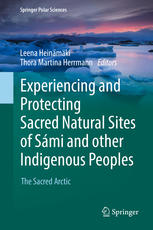

Most ebook files are in PDF format, so you can easily read them using various software such as Foxit Reader or directly on the Google Chrome browser.
Some ebook files are released by publishers in other formats such as .awz, .mobi, .epub, .fb2, etc. You may need to install specific software to read these formats on mobile/PC, such as Calibre.
Please read the tutorial at this link: https://ebookbell.com/faq
We offer FREE conversion to the popular formats you request; however, this may take some time. Therefore, right after payment, please email us, and we will try to provide the service as quickly as possible.
For some exceptional file formats or broken links (if any), please refrain from opening any disputes. Instead, email us first, and we will try to assist within a maximum of 6 hours.
EbookBell Team

4.0
36 reviewsThis book focuses specifically on the experience and protection of indigenous, and particularly Sámi sacred sites in the Arctic. Sacred sites are being increasingly recognized as important reservoirs of Arctic cultural and biological diversity, as a means for the transmission of culture and identity, and a tool for the preservation of fragile northern social-ecological systems. Yet, legal protection of Arctic sacred sites and related policies are often still lacking or absent. It becomes increasingly difficult for site custodians in the Arctic to protect these ancient sites, due to disruptive changes, such as climate change, economic developments and infrastructural development.
With contributions from Sámi and non-Sámi scholars from Arctic regions, this book provides new insights into our understanding of the significance and legal protection of sacred sites for Sámi of the Arctic. It examines the role of international human rights, environmental law, and longstanding customary law that uphold Arctic indigenous peoples’ rights in conservation, and their associated management systems. It also demonstrates the complex relationships between indigenous knowledge, cultural/spiritual values and belief systems and nature conservation. The book looks forward to providing guidelines for future research and practice for improved integration of the ethical, cultural and spiritual values of nature into law, policy, planning and management. As such, this book offers a contribution to upholding the sanctity of these sites, their cultural identity and the biodiversity associated with them.